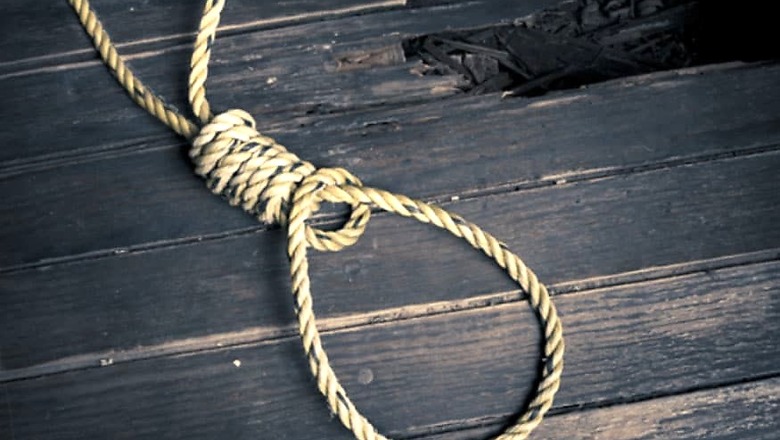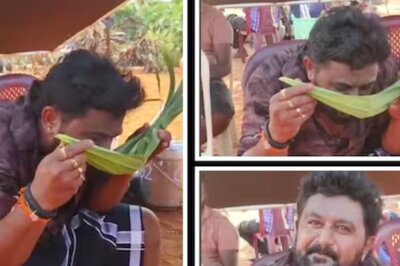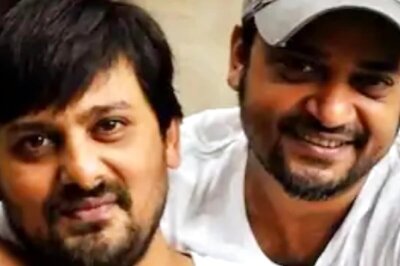
views
About two decades ago, a Supreme Court Constitution Bench was constituted in ‘Gian Kaur Vs. State of Punjab’. The bench had to consider the fundamental issue of a person’s right to die.
Among the things that the Bench unanimously agreed on was that the Right to Life includes a dignified procedure of death.
Such a right, though the judgment doesn’t explicitly say so, would also include the right of a person awarded the death sentence to die with dignity.
Death sentence awarded in India translates to death by hanging. According to Section 354(5) of the CrPC: “When any person is sentenced to death, the sentence shall direct that he be hanged by the neck till he is dead.”
And in observations made by the Supreme Court as well as the Law Commission, the fact that death by hanging is ‘cruel’ and ‘inhuman’, has been underlined several times.
Take for instance Supreme Court’s 1982 ‘Bachan Singh Vs. State of Punjab’ case. Justice Bhagwati had observed and held that ‘hanging’ a condemned prisoner involves intense physical pain and suffering coupled with mental anguish, psychological strain and physical agony which is nothing but an act of cruel and inhuman mode of execution.
The Law Commission of India, way back in 1967, in its 35th report, had studied the various modes of executing the death sentence in India.
In Paragraph 1149, the Law Commission concluded that there is a considerable body of opinion which would like hanging to be replaced by something more humane and more painless.
In the following paragraph, the Commission noted that the method of execution of death sentence should be certain, humane, quick and decent.
However, it is common knowledge that the current method of executing convicts on death row, i.e. by hanging them, is neither humane nor quick.
To understand the reasons, read this excerpt on hanging death-row prisoners written by one Warden Duffy of San Quentin prison in the USA.
“The day before an execution prisoner goes through a harrowing experience of being weighed, measured for length of drop to assure breaking of the neck, the size of the neck, body measurements etc. When the trap springs, he dangles at the end of a rope.
There are times when the neck has not been broken and the prisoner strangles to death. His eyes pop almost out of his head, his tongue swells and protrudes from his mouth, his neck may be broken and the rope many times takes a large portion of skins and flesh from the side of the face that the noose is on. He urinates, he defecates and dropping fall to the floor while witnesses look on and at almost all executions one or more faint or have to be helped out of the witness room.
The prisoner remains dangling from the end of the rope from 8 to 14 minutes before the doctor, who has climbed up a small ladder and listen to his heartbeat with a stethoscope, pronounces him dead.
A prison guard stands at the feet of the hanged person and holds the body steady because during the first few minutes there is usually considerable struggling in an effort to breath. It has also noted that if the drop is too short, there will be a slow and agonising death by strangulation. On the other hand, if the drop is too long, the head will be torn off.”
Death by hanging is, in fact, not only barbaric, inhuman and cruel, it also goes against the resolutions adopted by the United Nations Economic & Social Council (ECOSOC) which had categorically resolved by way of a safeguard which states, ‘Where Capital punishment occurs it shall be carried out so as to inflict minimum possible suffering’.
The Supreme Court has also held that the execution of the death punishment should satisfy the following test:
1. The Act of execution should be as quick and as simple as possible and free from anything that unnecessarily sharpens the poignancy of the prisoner’s apprehension.
2. The Act of the execution should produce immediate unconsciousness passing quickly into the death.
3. It should be decent.
4. It should not involve mutilation.
The Law Commission of India in its 187th Report, published in October 2003, on the mode of the Execution of Death Sentence held that intravenous lethal injections are the best-controlled way of executing death-row prisoners.
It remarked that ‘hanging’ undoubtedly is accompanied by intense physical torture and pain.
It also noted the fact that there was a significant increase in the number of countries where ‘hanging’ has been abolished and it has been substituted by electrocution, shooting or lethal injection.
Yet, another interesting aspect of the issue involved is the fact that there is a complete discrimination vis-à-vis a condemned prisoner who has been tried under the Code of Criminal Procedure, 1973 and the prisoner who has been tried under the provision of The Air Force Act, 1950, The Army Act, 1950 and The Navy Act, 1957.
Under Section 354(5) CrPC, the only mode which has been prescribed for the execution of the death sentence is ‘hanging by neck till death’ whereas, under the above-mentioned acts, the execution has to be carried out either by hanging by neck till death or by being shot to death.
‘Shooting’ a condemned man necessarily involves less agony when compared to hanging in which there is a torturous procedure of weighing, measuring the height of the convict etc. in order to determine the length of the drop etc.
Thus, an endeavour has been made where the mode of execution has to be changed keeping in view the developing society at large and the intent and the objects of the various pronouncements of the courts as well as the Law Commission. All of them in unequivocal voices have said that the mode of execution of death sentence should not only be less painful but should be quick and have a humane touch to it.
(The author is a Supreme Court lawyer and a petitioner in this case. Views are personal).



















Comments
0 comment